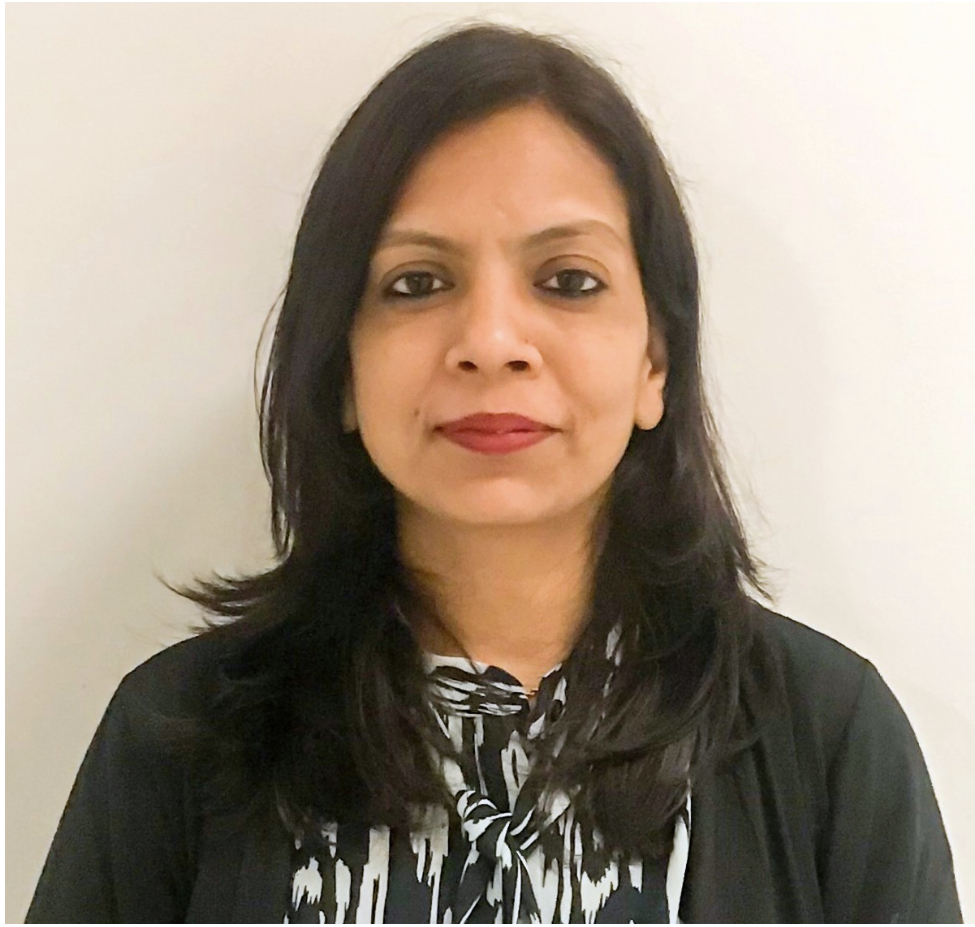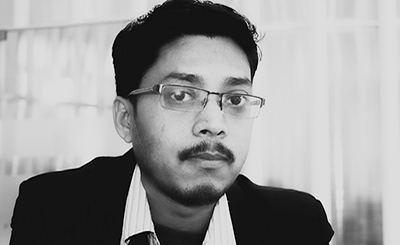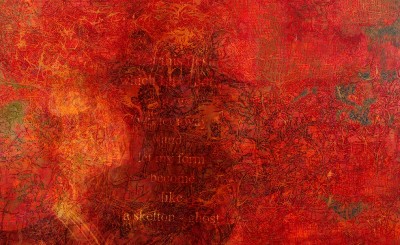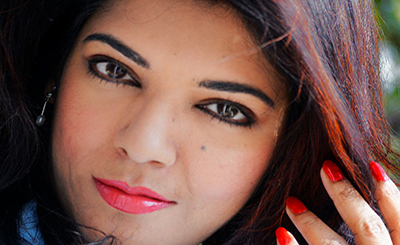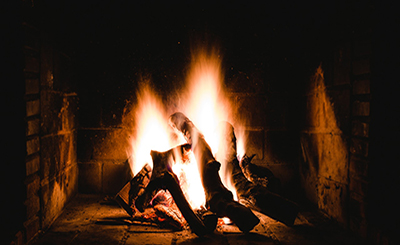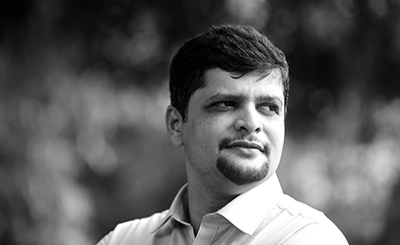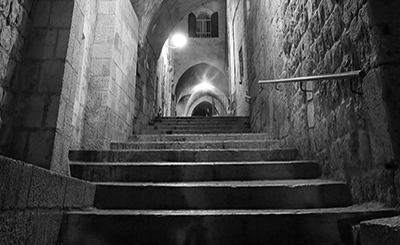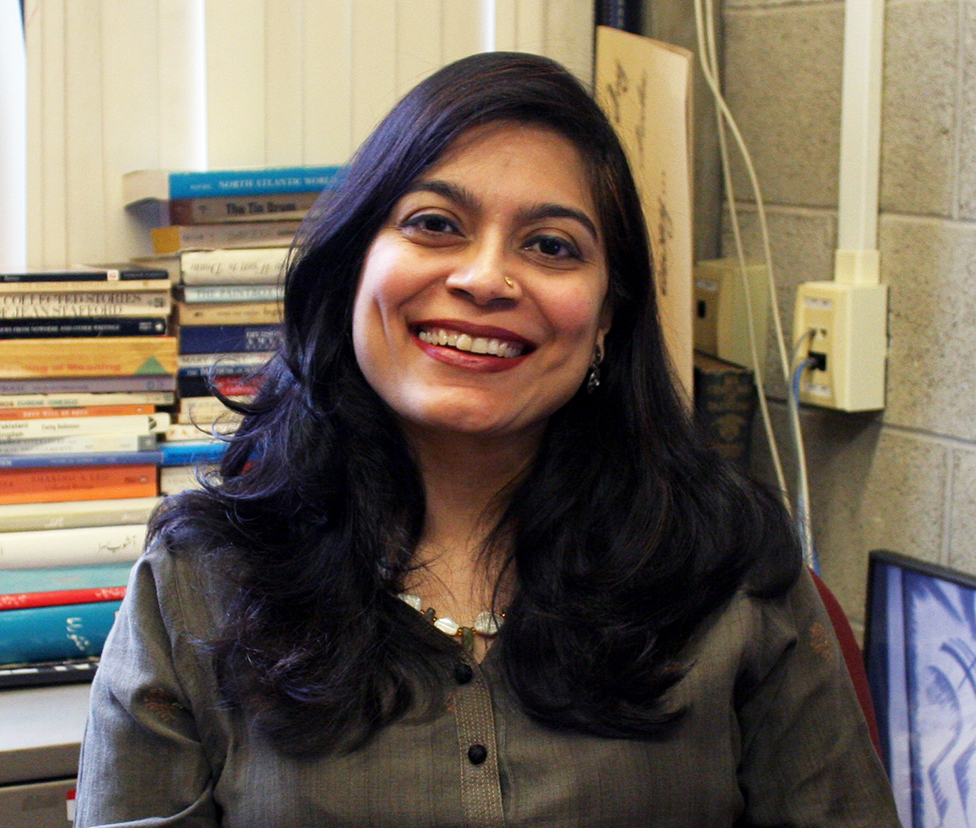
Sadia Abbas. Photo: Lawrence Lerner
In her debut novel, the US-based Pakistani author explores how a woman could live with misogynistic values, and with the men in their family bloated with ‘unearned sense of superiority and unthinking everyday cruelty’
US-based Pakistani author Sadia Abbas’s debut novel, The Empty Room (Zubaan Books, 2018), which has been shortlisted for the DSC Prize for South Asian Literature, opens with a newly-wedded couple — Tahira and Shehzad — lying on the bed still, feigning sleep. As the novel — set in the Karachi of 1970s amid the political turmoil of a new nation hurtling towards military rule — progresses, that pretense becomes the defining element of their always-on-the-rocks marriage. Tahira, a painter, struggles to find an escape from her humdrum world of stifling conformity, but chooses instead to stay in the trap her marriage proves to be, resolving to keep in mind the “triviality” of her pain and the “modesty” of her suffering as against “the much greater grief of true tragedy.”
Tahira, caught between the suppression of her identity at home and the larger mood of repression in the country, tries to drown her grief in the canvas, in exuberant burst of colours: she embarks on a series of paintings, titled “The Empty Room”, filling the canvas with vivid shades that seem to be missing in her loveless, lackluster life of drab domesticity.
Abbas, professor of English at Rutgers University in Newark (US), who has also written At Freedom’s Limit: Islam and the Postcolonial Predicament (Fordham University Press, 2014), grew up in Pakistan (Karachi, Peshwar and, briefly, Lahore) in a “troubled and misogynistic” household where misogyny was a part and parcel of the daily life. But Abbas fought hard against patriarchy — and the presumption of ownership of all the women in the family by men. She was the first person in her family to marry a non-Pakistani (an Englishman) and also the first to get divorced. For The Empty Room, she mines all this and much more.
Abbas modelled Tahira on several women of that era who were stuck in failed marriages and whose fortitude and forbearance have not been adequately chronicled in the fiction from the subcontinent. Today, she says, women still face extraordinary misogyny and similar social attitudes, but they have a somewhat stronger sense of what’s due to them. “At the same time, I see that many of my students, from all backgrounds, have internalised quite a bit of misogyny,” says Abbas.
Excerpts from an interview:
Shireen Quadri: In The Empty Room, you juxtapose a crumbling, unhappy marriage with the state of a nation where things are beginning to fall apart, with the ten years the novel spans proving to be the prelude for greater tragedies (military rule) to unfold as compared to the “triviality” of a newly-married woman’s grief. Where did this novel spring from? How much has the Pakistan of Seventies been part of your gaze? Did you refer to novels that pitted the personal against the political during the decade?
Sadia Abbas: I think there were two impulses: 1. I wanted to think of different times that had the seeds of the violence that became so normalised in the 1980s but were different. 2. I used to meet these astonishing women — talented, educated, super- thoughtful — and wonder how they managed to make it with these men with their completely unselfconscious and unearned sense of superiority and unthinking everyday cruelty. So, I wanted to understand that. Also, I was raised with these misogynistic values and broke with them quite dramatically, but I wanted to try to understand how somebody might live them. I did a lot of research, memoirs, interviews etc. but not really novels. I was also thinking of these great Urdu television plays on PTV (Pakistan Television) written by Haseena Moin and Fatima Surayya Bajia. (Editors’ note: Plays like Aahat, Ankahi, Bandish, Dhund, Dhoop Kinarey, Kasak, Pal Do Pal, Parchaieyen, Shehzori, Tere Ajane Se, Tanhaiyaan, Uncle Urfi and Zeir Zabr Peish, etc).
Shireen Quadri: Your protagonist, Tahira, is someone a lot many women of that era in the subcontinent can see themselves in. In what ways is she a product of the spirit of her times? How do you see her being shaped by the poets and activists she knows and spends time with and the literature she reads?
Sadia Abbas: Tahira’s story is part of the post-60s historical moment — a moment of possibility and potential transition for women, which leads to the confusion and disappointment of the moment being all the more stymying, I think. Tahira is a reader and a deep thinker and intellectually driven and aesthetically curious and talented. I wanted to think of a character that was conscious of the possibilities of transformation but was also living in a patriarchal structure with deep historical roots.
At the same time, I wanted to write about a moment of revolutionary possibility — post-60s — which was lost because of Zulfiqar Ali Bhutto’s authoritarian streak and his complicity in the atrocities in Bangladesh and with the military, which really damaged those possibilities.
I also wanted to write about a corner of Karachi where displaced people from Uttar Pradesh (UP) congregated after Partition and which was very much part of a certain intellectual culture. So, I wanted to write about that moment and that corner of the city and a certain Urduphone culture. Tahira’s story is very much inflected by all of it.
Shireen Quadri: There are nods and references to Urdu poets and writers in the novel. Do they reflect your own personal appreciation of Urdu literature and some specific works that Partition had spawned, along with wounds that would not be healed for a long time to come?
Sadia Abbas: Very much so. Part of it is that I love many of the writers to whom I refer — Qurratulain Hyder, Ismat Chughtai, Mirza Ghalib, Faiz Ahmed Faiz — but I also wanted to think very particularly about how language shapes consciousness and how Urdu literature has shaped a certain sensibility, which is rather familiar to me as I grew up in an Urduphone family. With Partition, a sensibility in Urdu literature associated with UP is also experienced by many through displacement.
That literary Urdu culture had, and continues to have, a certain cultural arrogance but also came to be in an antagonistic relation to the Pakistani State, while aiding in crafting its founding ideology. So, for instance, people who came from UP and their descendants are still called Muhajirs — people born in Pakistan, who may or may not even have been to India are still immigrants.
My father lost his job in the 80s, under something called Martial Law Regulation 52, a regulation declaring people enemies of state — in part because he was from UP. He had come to Pakistan alone on a bus after Partition and believed in the dream of a separate homeland. One of the questions he was asked, right before he was sacked, was whether he was a “son of the soil” — in that context meaning: Punjabi. He was unemployed and devastated for my entire adolescence and given what a believer he was in the nationalist cause, he has never really recovered from that profound betrayal of his youthful ideals. All of that is in the mix in the novel’s imagining of the displacement of UP culture.
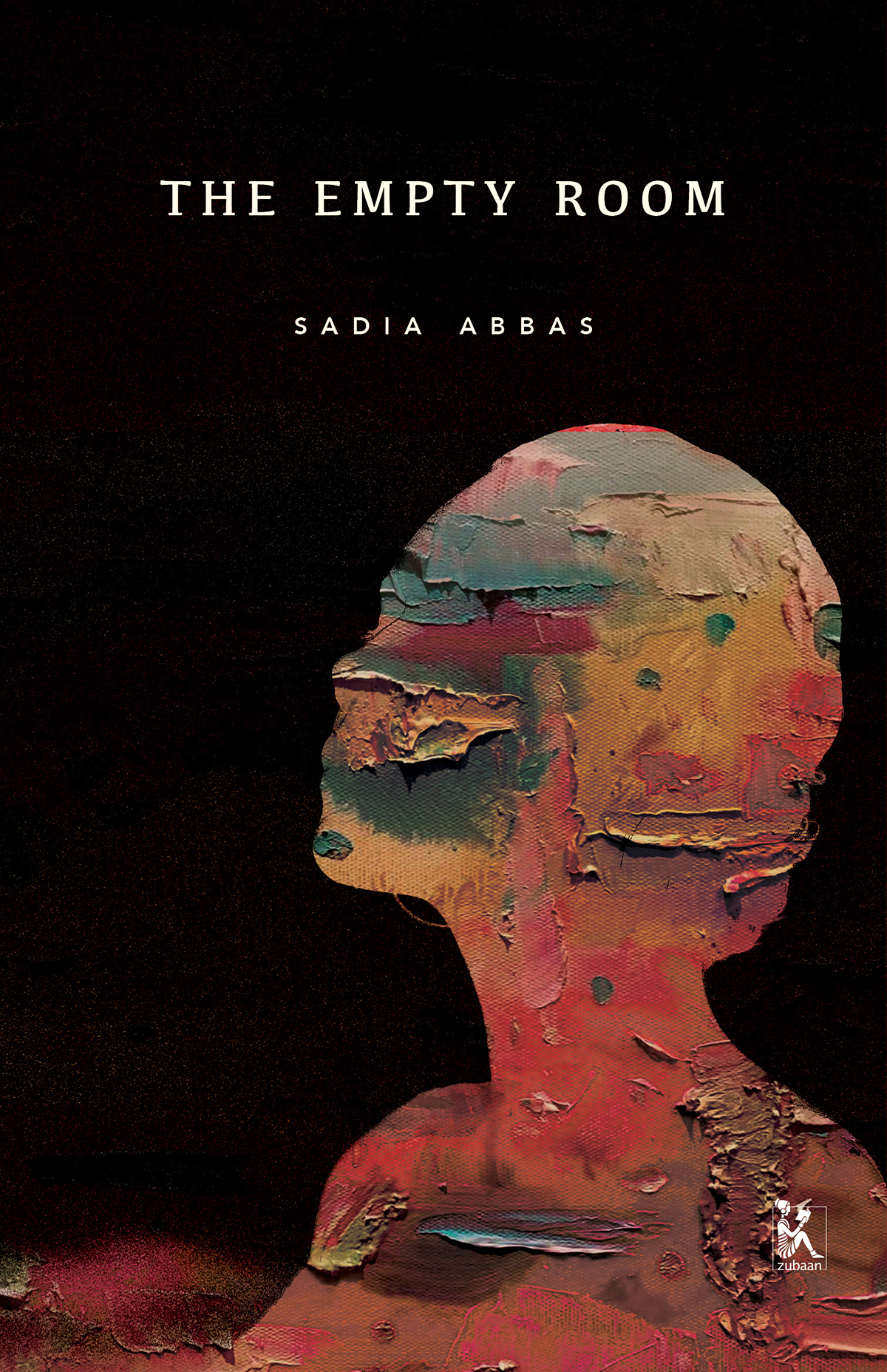
Shireen Quadri: You grew up and studied in Pakistan and Singapore. How did your identity as a Pakistani woman help craft Tahira's character, making her the kind of person she is in the novel, hanging on to a husband so removed from her intellectual and ideological standing in the name of tradition and family honour? If you were to set the novel much later, would you see her acting any differently? How do you think the Pakistan of today, or indeed the entire subcontinent, treat a woman like Tahira?
Sadia Abbas: I actually lived in Singapore when I was a child for about five years and that shaped me in all sorts of subtle but enduring ways. We moved back to Karachi when I was 6 but then I grew up in Pakistan — mostly Karachi, but also, briefly, Peshawar and Lahore. I left to study in the United States after my “A” levels. I was, however, brought up with these attitudes and fought them quite hard and probably, according to some, rather dramatically. I also grew up in a rather troubled and misogynistic household, which was also anti-cultural in the way people tended to be in the ’80s and ’90s, and still are but now it’s cool in some upper middle class circles to get a Ph.D in literature, for instance. Back in the 90s, everyone thought I was crazy. I remember that my youngest aunt’s husband and the older of my mother’s brothers even had some sort of conversation about how I shouldn’t be sent abroad to study — because of the presumption of ownership of all the women in the family. Tip of the iceberg: that conversation. My mother tried to prevent it. Interestingly, my very conservative and otherwise chauvinistic father ignored them all on that one and was relatively supportive.
I was the first person in my family to marry a non-Pakistani (Englishman) and also the first to get divorced so I’ve heard most of it. Really.
On Tahira, I would have to think more about it — she’s a very specific character, but I think young women (say in their 20s now) tend to have rather different attitudes. Not all of them, of course. I’m thinking of the recent Aurat march in Pakistan and the thoroughly admirable fierceness of the young women and their unapologetic and sardonic posters, which raised quite a (deplorable, to my mind) stink. Of course, they still face extraordinary misogyny and similar social attitudes, but they have a somewhat stronger sense of what’s due to them. At the same time, I see that many of my students, from all backgrounds, have internalised quite a bit of misogyny.
Shireen Quadri: In a novel so deeply enmeshed in diminishing personal and political freedom, art comes as an escape for Tahira, doesn’t it, even though, for her in-laws, it’s a form to show their social superiority. Her desire to paint that her mother negotiates for her before the wedding provides her the much-needed diversion, and gives an outlet to her innermost feelings. Did you conceive this novel as a meditation on art’s power to heal?
Sadia Abbas: There’s another layer though. In the novel, people think art will liberate Tahira and the novel is quite ambivalent about that notion of artistic liberation and rescue, I think — as is Tahira herself. But I did conceive the novel as a meditation on a certain notion of art as a liberator that comes out of Romantic notions of art and subjectivity. Also on what constitutes a Bildungsroman in such circumstances.
Shireen Quadri: The novel stands out for its interesting, and intricately laid, interplay between its interiority and exteriority. Did you have to work on the delicate balance between the two?
Sadia Abbas: Oh, yes. I had initially thought I would write a novel that never left the house and into which the outdoors seeped, but I found that too claustrophobic to live with. I was, however, very conscious of the necessary delicacy of that balance for what I was trying to do. I wanted to write a novel that was also a meditation on the marriage plot and on domestic fiction and so a lot of thinking about the form of that kind of novel, its history and its relation with the public sphere went into writing The Empty Room. Hence, for instance, the allusions to Deputy Nazir Ahmad, Samuel Richardson and to Behishti Zevar.
Shireen Quadri: Besides personal and political, there is another juxtaposition in the novel: of colour. The rich colours of Tahira's ‘Empty Room’ are contrasted with the sepia tone of the city, draped by violence and senseless brutality. How crucial was this contrast to the general feel and landscape of the novel?
Sadia Abbas: It’s interesting, I suppose you could read it that way, but I don’t really think of the entire city as rendered in sepia tones. I think of it as a bit of a love letter to Karachi, while imagining it before the violence of the 80s and thinking of the political forces that were incubating the transformations that were to come in the city.
At the same time, I was thinking of the colour contrasts as metaphorical and symbolic, yes. I have always been intrigued by how we in South Asia tend to merge astonishing colour and beauty with astonishing violence towards women and towards those we perceive to be lower than us in caste and class terms. But I am also interested in painting and literary representations of art, and the book is very much about how women create art in difficult circumstances, so the exploration of colour becomes part of that set of interests.
Shireen Quadri: Shehzad, Tahira’s reticent and taciturn husband, is also a case in point for a very deft portrayal of a character in a debut novel. Though he is a man of contradictions, you make his character tremendously nuanced, and even empathetic, with only skirting around his misogyny and not dwelling on it. You also contrast his masculinity with that of Tahira’s brother, Waseem, who seems to be so idealistic and of a different mould. Though they come from the socially privileged background, their outlook and worldview are poles apart. How did you work on this? How conscious were you of crafting Shehzad’s character with deep roots in a patriarchal society?
Sadia Abbas: I have a historical and conceptual bent, so I was interested in the historical contours of these divisions. I have also always been interested in how, in arranged marriages, the factors that seem to be of concern are almost eugenicist —colour, family, caste, class are supposed to match or complement each other on both sides, but attending to ideological differences between families and individuals seems inconceivable. I think that’s in part because the idea that women, in particular, have thoughts and ideologies doesn’t really register. I did a lot of research on student leftist politics and on patriarchal discourses of marriage.
Shireen Quadri: As an academic, what was your experience of working on fiction? Was it more liberating? In your works, how do you manage to flit in and out of the two worlds? Do they inform each other?
Sadia Abbas: I’m very happily a nerd, so I love my academic work and love going back and forth between the fiction and the scholarship, which has its own creativity and stylistic imperatives. In some ways, I find the academic work more liberating as it is less dependent upon market structures and there is the possibility of slower and deep historical thinking and sustained conversation, which I think is necessary in our current age of acceleration. Having said that, the university as an institution is under assault from neoliberal forces and from those who fear and despise the humanities. A certain appalling managerial structure is taking over and destroying faculty governance and needs to be resisted.
For me, the creative work and scholarship do inform each other. For instance, I was in London last month, doing research on both my next academic book and my next novel and while I was researching the novel, I found something that is now part of the chapter I am writing for the academic book. Another example: I was writing an academic essay on Quratulain Hyder’s Aag ka Darya (1959) while completing The Empty Room and some of that seeped into the last quarter of the novel. The problem is really about juggling the demands on my time.
Shireen Quadri: Who are some of the women writers of the subcontinent you have looked up to?
Sadia Abbas: Quratulain Hyder, Ismat Chughtai, and Fehmida Riaz. All three are mentioned in The Empty Room. Hyder is probably my absolute favourite at the moment — she’s a great storyteller but I also love her erudition. I have also been writing about her in my academic work. I also admire Mahasweta Devi, Sara Suleri, Anita Desai and Nayantara Sahgal. Others, too, but these come to mind immediately.
Shireen Quadri: How significant it was for you to first get published in Asia?
Sadia Abbas: It was actually very important to me. As I have said on numerous occasions, I really didn’t want The Empty Room to become part of the oppressed brown woman narrative in the West, which is so racialised and occlusive. You know I used to think about whether to finish the book and then I really wanted to publish it in South Asia first, if not primarily. It seemed that was where the primary audience was for this particular book. So, when Urvashi Butalia, whom I have admired for years, said she liked it, I was just ecstatic.
More from The Byword
Comments
*Comments will be moderated



